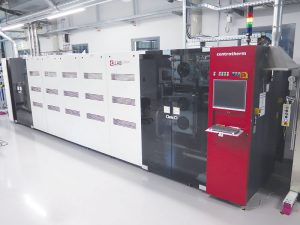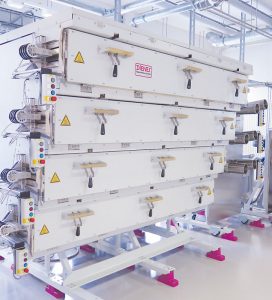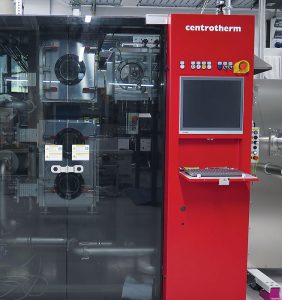
(All images courtesy of DITF)
New processing technologies allow for microwave assisted decomposition of carbon fiber composites.
TW Special Report
A new technology uses microwaves and plasma heating to produce carbon fibers in an energy-efficient manner. This means high-strength composite materials can be produced more cheaply and efficiently. The German Institutes of Textile and Fiber Research (DITF) is part of the Carbowave research consortium, which aims to improve and commercialize microwave and plasma-induced carbonization.
The combination of high strength and low weight makes carbon fibers almost indispensable in manufacturing modern lightweight products. Major industries, such as automotive, aerospace, and renewable energy increasingly rely on high-strength carbon fiber composites.
Despite their advantages, these materials are complex and energy-intensive to produce. Stabilization and carbonization of the fibers, which are often made from petroleum-based polyacrylonitrile (PAN), requires slow process control in high-temperature furnaces. Despite the considerable energy input, a low material yield is achieved due to the long dwell time in the ovens.
A new process uses microwave and plasma heating to replace the traditional stabilization and carbonization process with energy-saving technology. With this technology, energy is only induced into the fibers locally, thereby minimizing energy loss. This process shortens the production time of carbon fibers, enabling higher production volumes with lower energy consumption.

A Europe-based research consortium has joined forces under the name “Carbowave” to optimize and market the process. Its specific research objectives are to develop an optimal coating for PAN fibers that improves microwave adsorption, to develop a plasma heating system for the oxidative stabilization of PAN fibers, and to advance microwave and plasma technology for continuous processes.
DITF is responsible for implementing these processes in continuous production and on pilot lines in a plant. As part of the joint project, the central task of DITF is the stabilization of the precursor fibers with plasma technology. This involves combining plasma and low-pressure technology to reduce energy consumption in the stabilization process.

In terms of the circular economy, the Carbowave project includes carbon fiber recycling. The new process technologies will allow for the microwave-assisted decomposition of carbon fiber composites (CFRP).
The Carbowave research consortium provides a holistic approach that includes the production and recycling of modern lightweight materials.
2025 Quarterly Issue III




